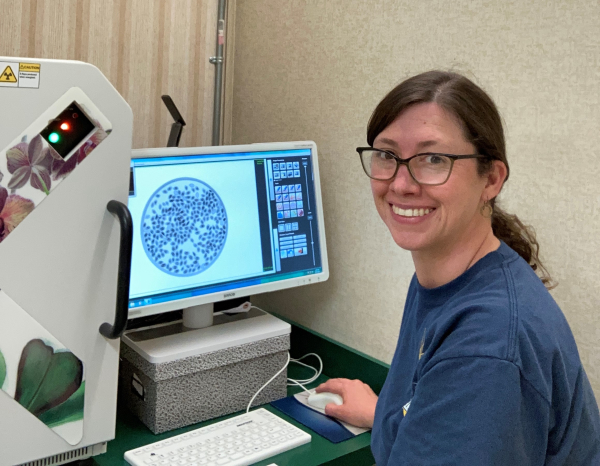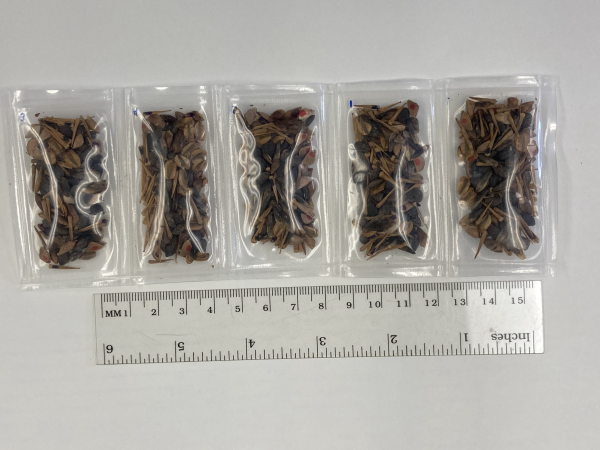Editor’s Note: Today’s feature was submitted by the U.S .Forest Service.
March 21, 2023 – Kayla Herriman is x-raying tree seeds that recently traveled 40,000 miles beyond the far side of the moon. The seeds completed their epic journey on NASA’s Orion spacecraft as part of the NASA’s Artemis program. USDA Forest Service scientists, including Herriman, now want to know how space travel may have affected the seeds.

“This X-ray machine is really magical,” said Herriman, a seed extractory manager with the Forest Service in Bend, Oregon. “It allows me to see what’s going on inside a seed coat and determine whether that seed has tissue that we think will become a tree.” The seeds received the same x-ray treatment before launching into space, allowing scientists to compare before-and-after images.

“We made sure the seeds were filled with good tissue before we sent them up,” said Herriman. “So now the x-ray will help paint a picture of how the space voyage may or may not have changed them.” These seeds are part of the Artemis Moon Trees project, a collaboration between the Forest Service and NASA. The project flew approximately 1,200 seeds from five tree species — loblolly pine, American sycamore, sweetgum, Douglas fir, and giant sequoia — aboard Orion. The seeds, which left the Earth on Nov. 16, 2022, orbited the moon and traveled 270,000 miles from Earth before splashing down on Dec. 11.
The Artemis Moon Trees project harks back to 1971 when Stuart Roosa, the command module pilot for the Apollo 14 mission, orbited the moon with tree seeds tucked into his personal kit. Roosa, a former Forest Service smokejumper, or a firefighter who parachutes to the site of a forest fire, carried these seeds at the request of the Forest Service Chief Forest Service employees, then grew these seeds into seedlings and distributed them across the country. Many so-called “Moon Trees” survive today. This next generation of Moon Trees builds upon this legacy but traveled much deeper into space than their predecessors.
Scientists selected which species would travel into space based on a few factors, including which seeds flew on the Apollo mission.

“Four of the five species flown on the original Moon Trees mission were onboard again because they are common species and represent a broad geographic area of the lower 48 states,” said Kasten Dumroese, research plant physiologist and national nursery specialist with the Forest Service’s Rocky Mountain Research Station. “For this mission, scientists included additional seed sources for species having large natural ranges: American sycamore and Douglas-fir. These additional seed sources will help the Moon Trees team match the genetics of the species with planting sites to help ensure the long-term health of the trees.”
As part of their preflight training, the seeds were x-rayed and packaged in special pouches to help them remain healthy.
“We created ‘ravioli’ packets that contained samples of each seed in the event some needed to be removed because of weight or size concerns,” Herriman said. “We ended up packaging the seeds so well that NASA didn’t need to remove any and we could have even sent more! People may picture acorns or pinecones when they think of tree seeds, but the actual seeds sent on the Orion were only millimeters long. The packets also kept the seeds dry, which helps them remain healthy longer.”
Now that the seeds returned to Earth, Forest Service scientists plan to test a subsample to see if space impacted their ability to germinate or grow. Under ideal greenhouse conditions, the Moon Tree seeds will be germinated alongside seeds that remained on Earth to look for any differences in seedling growth. The remaining seeds will land in Forest Service nurseries to be grown into seedlings and eventually distributed to educational and community organizations. Hopefully, these Moon Trees spark interest in earth and space science.
“These Moon Trees are one way that someone from any community can connect to something they’re not usually exposed to,” Herriman said. “This project opens a door for curiosity.” Find out more about Moon Trees and access many free educational materials supporting the Artemis Moon Trees Project at NASA’s Moon Trees Toolkit and the Natural Inquirer Moon Trees website.
— Margaret Gregory, Research and Development, U.S. Forest Service
Forest Service Environmental Education Specialist Rachel Bayer and Natural Inquirer Director of Education Jessica Nickelsen also contributed to this story.